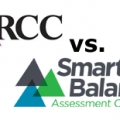
One of the shifts with the Common Core standards lies with the increased emphasis in asking students to produce evidence-based writing in response to text they have read. Likewise, the PARCC assessment will reflect this shift in its test design by asking students to read literature and non-fiction selections and then respond to their reading with a written response. Therefore, it is imperative for students to be able to not only comprehend literature and non-fiction but also to be able to refer to relevant information in the passage to support claims the student makes in his or her writing.
Check out three ways to help students become comfortable with citing evidence, organizing their thoughts, and writing a response that remains focused and well developed:
• Graphic organizers.
Allow students to practice planning out their ideas in a visual form. In A Handbook for the Art and Science of Teaching (2009), Marzano states that, “The use of a wide range of graphic representations [such as graphic organizers] also enhances students’ reading comprehension and critical reasoning skills” (p. 74).
To help students organize their thinking, then, you may wish to create a graphic organizer in which students can map out their ideas for an introduction, body paragraphs, and conclusion for each essay. Then, students can note their support and evidence that they plan to use underneath each box.
As the students begin to compose their essays, it is now much easier to focus on the writing, since they have taken the time to think through the content of the response. Plus, creating a written outline or list to plan out ideas may not be the best way for a visual learner to brainstorm; the graphic organizer will certainly aid these students.
• Think-alouds and modeling.
Show students how to continue to revise their essays to catch areas that are unclear, disorganized, or faulty in their logic. To do this, model the revision step with a student or teacher-created sample of a rough draft of an essay. Walk students through the process of rereading the question/prompt, verbalizing their ideas, and then critically reviewing what they wrote.
For example, if the task requires the writer to describe the possible motivation behind a character’s actions, you could use your sample to think-aloud as you review and discover places in your essay where you made a point but failed to support your claim – and then model how to revisit the text to locate supporting evidence. Or, you could provide a sample in which the supporting details aren’t really relevant to what you are trying to explain. In any of these instances, model revising the words, ideas, and examples to accurately reflect understanding.
In addition to the aforementioned ideas, some teachers wish to provide students with acronyms and other mnemonic devices to guide students. For instance, devices, such as “ACE” (answer; cite evidence; extend) and RACE (restate; answer; cite; extend) may help students organize their thinking as they write.
Regardless of the device, graphic organizer, or other strategy, the key is to begin now getting them comfortable with both citing evidence and expressing their thoughts in verbal and written form.






Pingback: Text-based responses for PARCC | Think Educative